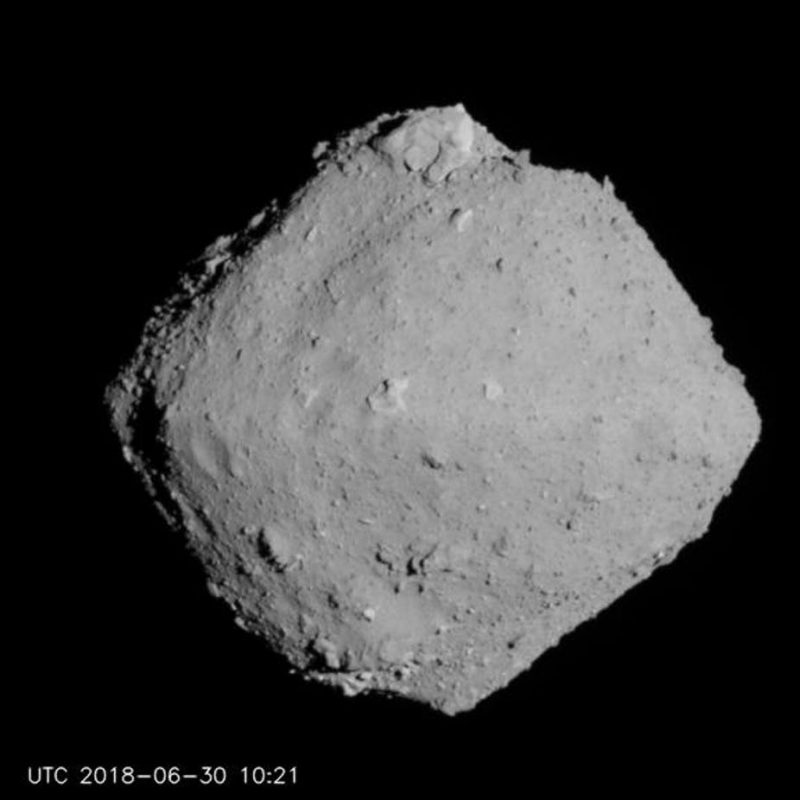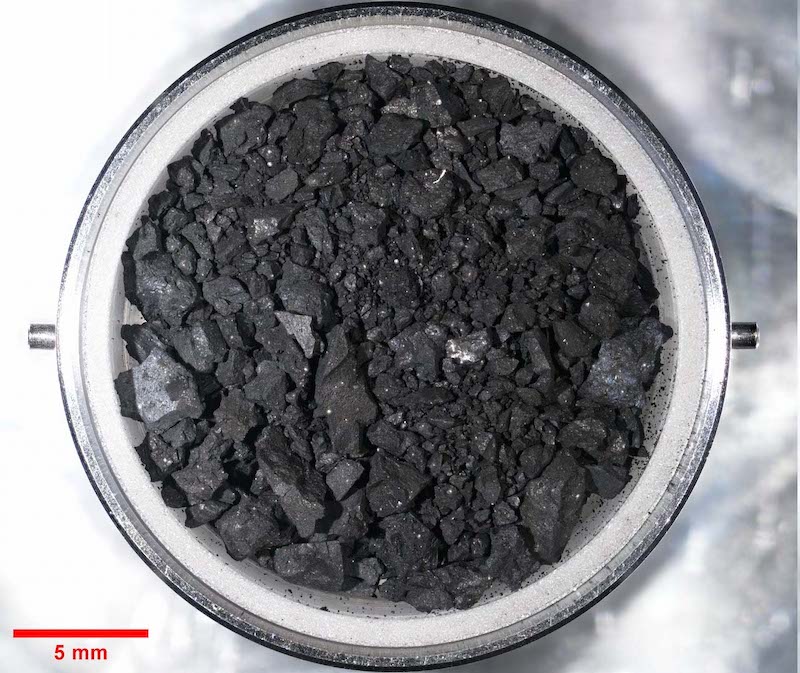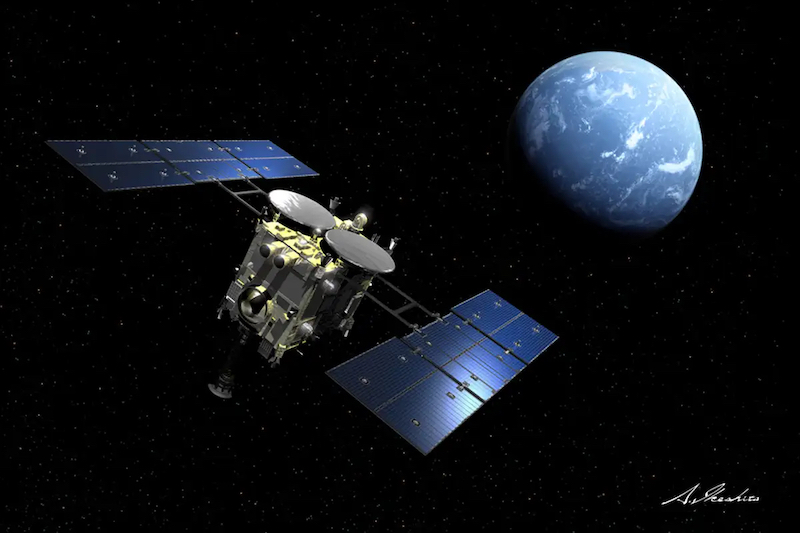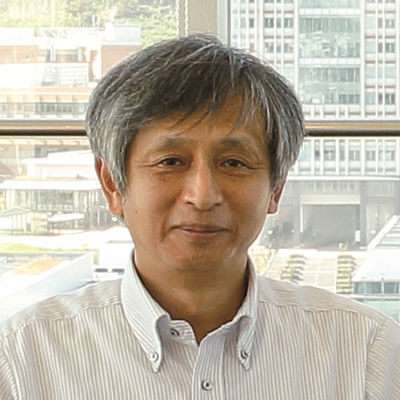
An analysis of samples from asteroid Ryugu, brought to Earth by Japan’s Hayabusa 2 mission in 2020, reveals that the asteroid is rich in primitive organic material. That’s according to researchers in Japan, who detailed their findings in two new papers presented at the 53rd annual Lunar and Planetary Science Conference in Texas, March 7 to 11, 2022. The asteroid is now known to contain 10 types of amino acids, the building blocks of proteins and life as we know it on Earth. The scientists said these are the most primitive asteroid samples yet studied. They said the findings provide important clues as to how life might have first developed on Earth, and how the raw organic materials might have been delivered to Earth billions of years ago.
You can read the first of the two papers here, and the second one here.

The most primitive material
The bits of rock and dust collected by Hayabusa 2 in 2018 and 2019 are ancient, relics from the origins of the solar system. In fact, the samples are being called the most primitive and pristine asteroidal material ever examined. Hisayoshi Yurimoto of the Hokkaido University in Japan told Tereza Pultarova at Space.com in a March 9 article:
The Ryugu material is the most primitive material in the solar system we have ever studied.
Ryugu is a carbon-rich asteroid that contains organic compounds. These types of asteroids are known as C-type (carbonaceous) asteroids. Ryugu also shares some characteristics of less common B-type asteroids. There are, though, some interesting differences between Ryugu and other similar asteroids studied previously. The samples are more “primitive” in their composition. This means that they are basically unchanged from when they first formed billions of years ago. In the cold depths of space, asteroids like Ryugu preserve organic compounds in their pristine state.
Moreover, the samples from Ryugu contain more carbon, hydrogen and nitrogen than samples from other similar asteroids. Why the difference? Other samples of these asteroids, so far, come from meteorites that originated from those asteroids. Which means, therefore, that their compositions have been altered – contaminated if you will – by Earth’s atmosphere and surface materials.
Watch a video from July 11, 2019 of the second time Hayabusa 2 briefly touched down on Ryugu to obtain samples:
Organic compounds in asteroid Ryugu
Hiroshi Naraoka of Kyushu University in Japan led the research team that focused on studying organic materials in the samples. Such organics are common in carbon-rich asteroids like Ryugu. Keep in mind, however, that these are the organic compounds that life as we know it is made of. They are not necessarily remains of ancient living organisms themselves.
Along with the carbon, hydrogen and nitrogen, the researchers discovered more than 10 types of amino acids, including glycine and alanine. This is interesting, since proteins are composed of amino acids. And proteins are an essential component of living things on Earth.
Naraoka said:
We detected various prebiotic organic compounds in the samples, including proteinogenic amino acids, polycyclic aromatic hydrocarbons similar to terrestrial petroleum, and various nitrogen compounds. These prebiotic organic molecules can spread throughout the solar system, potentially as interplanetary dust from the Ryugu surface by impact or other causes.

These are critical organics that life as we know it needs and is based on. If such organics can be easily spread through the solar system, as evidence suggests, then that could have implications for how life first developed on Earth. Were these building bricks of life first delivered to Earth by asteroids or comets?
Ryugu’s parent body
The samples also provide clues about the original larger asteroid that Ryugu came from. Scientists say that Ryugu broke off this parent body billions of years ago in a huge collision with another rocky body. This was the focus of the second paper. Today, Ryugu is basically a rubble pile of rocky debris loosely held togther by gravity. Scientists expected it to be a more solid body, so this came as a bit of a surprise.
Crystals in the samples contain a lot of bound water. Bound water isn’t flowing liquid water as we usually think of it. Rather, it is an extremely thin layer of water surrounding tiny mineral surfaces. This indicates that the parent body formed closer to the young sun than the frost line (or snow line) boundary. This is the distance where the temperature is cold enough in the young protoplanetary disk for volatile compounds (volatiles) like water, ammonia, methane, carbon dioxide and carbon monoxide to condense into solid grains of ice. Volatiles are elements that vaporize very easily. If the water wasn’t in the form of ice, then the parent body must have orbited within that boundary, closer to the sun.

The Hayabusa 2 mission to asteroid Ryugu
Hayabusa 2 arrived at Ryugu on June 27, 2018. It successfully collected 5.4 grams (0.2 ounces) of material in two sampling procedures in 2018 and 2019. The probe briefly touched down on Ryugu’s surface during those sampling events.
The probe also conducted extensive surveys of the asteroid itself. In another surprise, Ryugu appears more like a roughly-shaped diamond or top instead of being more spherical. It actually looks a lot like the asteroid Bennu, which has a similar shape. Like Bennu, it has an equatorial ridge that gives the asteroid its unusual shape. Ryugu is about 0.6 miles (one km) in diameter, and its surface is covered by many large boulders.
Other papers regarding analysis of samples from Ryugu, as well as Bennu, are available on the LPSC website. There are also additional poster sessions.
Bottom line: Researchers discovered an abundance of organic compounds, including amino acids, in samples brought back to Earth from asteroid Ryugu. The samples of primitive rocky materials were returned to Earth by Japan’s Hayabusa 2 spacecraft in 2020.
Source: Soluble Organic Compounds in Asteroid 162173 Ryugu
Source: Early History of Ryugu’s Parent Asteroid: Evidence from Return Sample
See also: Sample return reveals that the asteroid Ryugu is a carbon-rich primitive body
The post Asteroid Ryugu harbors life’s building blocks first appeared on EarthSky.
0 Commentaires